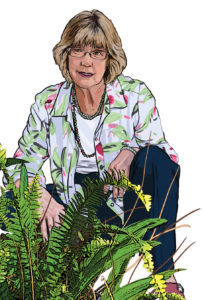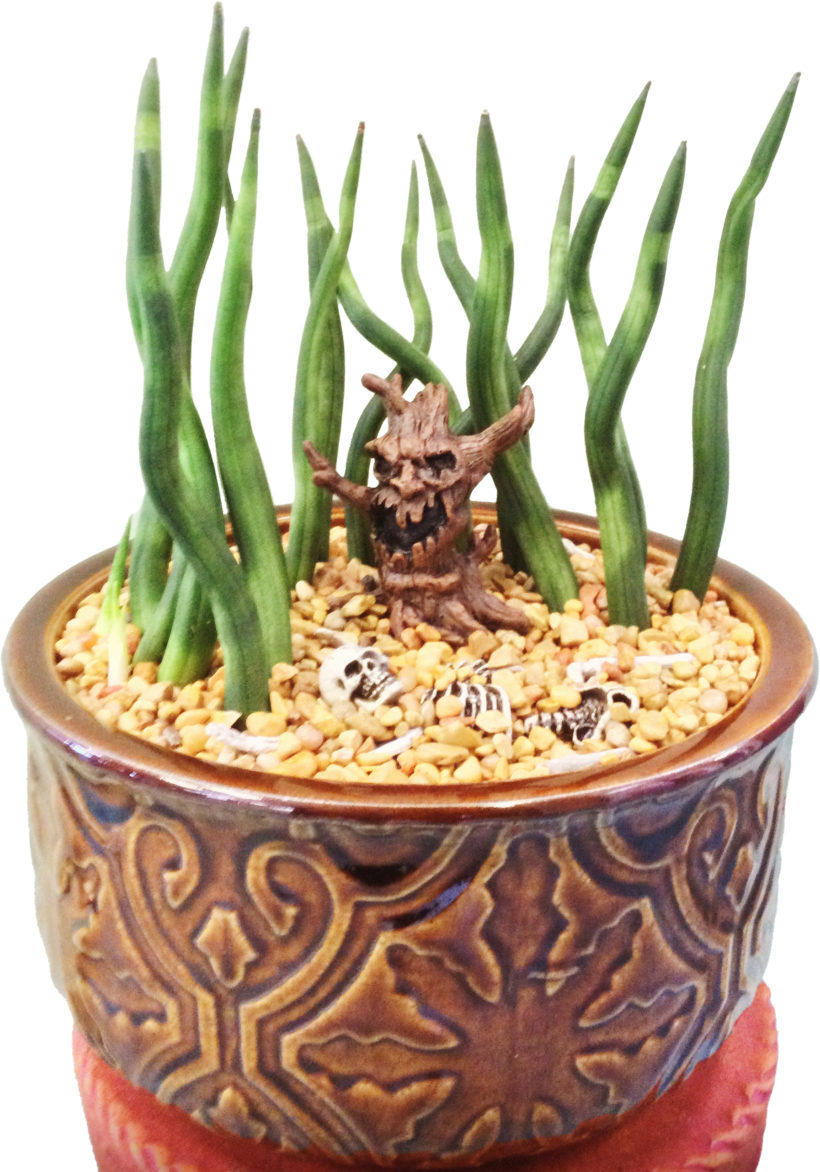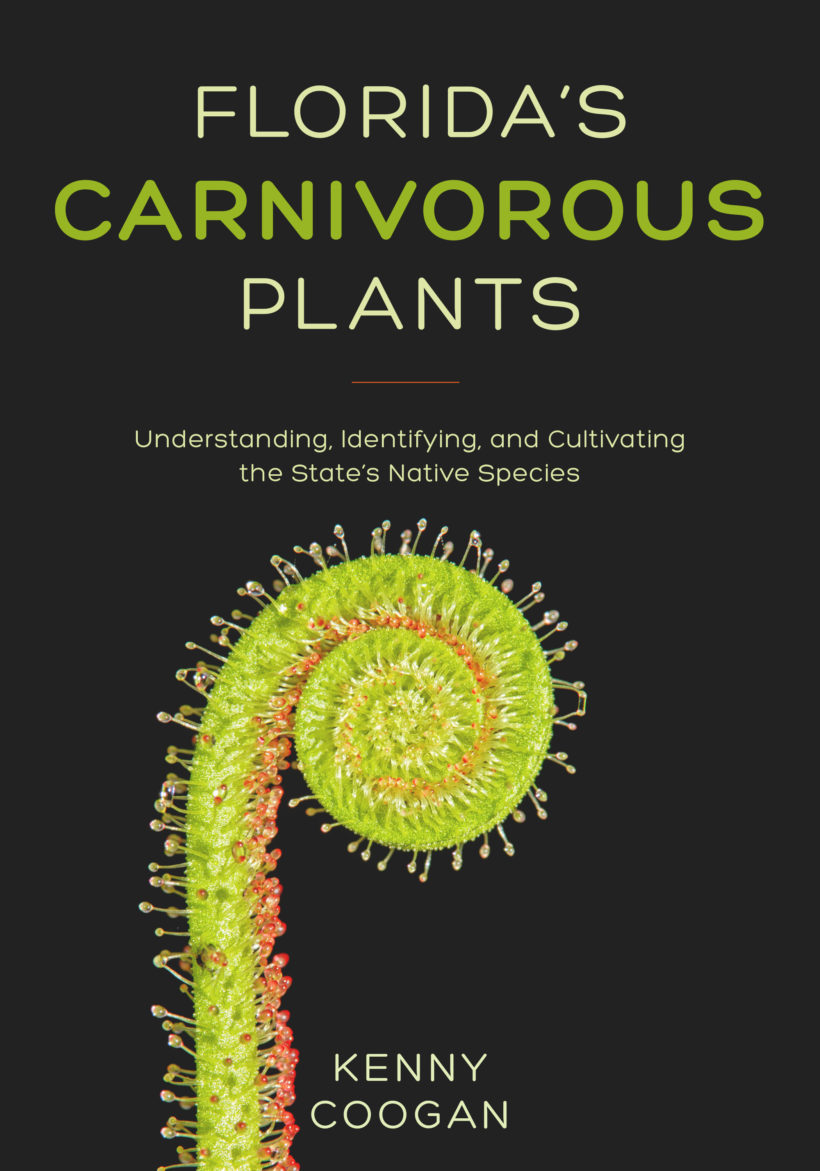Some plants are kind of scary and some actually eat living things. Here’s a look at some creepy flora and fauna that can grow in our area.

Illustration by Jordan Shapot
With Halloween approaching, some gardeners give thought to the creepy aspects of plants. And some plants can be a little scary: Poisonous flowers, stems and leaves; herbs that are toxic if ingested. Even some common houseplants are known to be really bad for humans and pets, including the popular philodendron, pothos and peace lilies.
It’s one thing to consider a plant that’s scary if you eat it, but have you ever thought about plants that are carnivorous?
Kenny Coogan is the author of the upcoming release, Florida’s Carnivorous Plants, from Pineapple Press. He is the co-founder of the Western New York Carnivorous Plant Club, the education director of the International Carnivorous Plant Society and runs his own nursery in Tampa. He has been interested in these fascinating plants since childhood.
“The most appealing aspect of these plants is not their meat-eating adaptation but how beautiful they are,” Coogan says. “Venus flytraps have contrasting colors and many have long lashes—to entrap their prey. Sarracenia pitcher plants look like beautiful vases with delicate veining. Sundews sparkle in the sunlight, inviting insects to drink their nectar to only be deceived and trapped in their adhesive glue.”
Florida has more than two dozen native carnivorous species that typically grow wild in the bogs and wetlands of North Florida and the Panhandle. But they are actually fairly easy to grow “in captivity,” Coogan says. Some can even do well on a sunny windowsill. Coogan keeps more than 1,000 plants both indoors and outdoors at his Tampa nursery.
He says there are three basic rules for success with these plants: Flood them with water, either distilled or rainwater, never tap water; do not use fertilizer or any chemicals; do not set off the traps deliberately, which essentially forces them to eat and is not good for their overall health.
“Water is the trickiest aspect. If you can provide rainwater or distilled water you can easily grow most carnivorous plants that are in cultivation,” Coogan shares. “Venus flytraps require full sun (6-8 hours) as do sarracenia (pitcher plants.) For those with shade, nepenthes (tropical pitcher plants) are a great option. I think nepenthes are a great gateway carnivorous plant since they don’t die back or slow down in the winter. They grow year-round and are very charismatic.”

As for his favorites? In his book release, Coogan writes, “Sarracenia species and hybrids are stunning plants that are often first to sell at my table at plant sales around the state. For a long time… they were my favorite. The extensive research needed for this book has enlightened me and renewed my interest to all the wonders that each genus provides. It is too difficult now to have a true favorite. But a three-foot towering pitcher is a hard plant to dismiss.”
Laura Perdomo, owner of the Peacock Cottage plant store in Ocala, suggests avoiding several plants, including the oh-so-pretty angel trumpet vine, which is part of the nightshade family. Its alkaloid content is highly poisonous to humans and animals. Experts even suggest wearing gloves while handling them.
Also to be avoided, Perdomo notes, is oleander. Though hardy once established and able to bloom nearly year-round, every part of the oleander is highly toxic, including leaves, stems, twigs and sap. The ingestion of even one leaf can kill an adult and smoke from burning it can cause severe reactions. When I think of my childhood home in south St. Petersburg, our neighborhood had dozens of these as foundation and specimen plantings, and I have to wonder: What the heck were people thinking?
For October, Perdomo suggests, consider the bat plant for a seasonal touch of fun creepiness. Part of the orchid family, bat flowers bloom on a stem with two bracts rising from the flower that look like bat wings. The typical black bat flower has deep purple bracts but there also is a white version. The flowers should be left on the plant to die naturally and aren’t suitable for cutting. They can bloom up to eight times in one season. They do well in the same environment as orchids: high humidity, strong airflow and low to moderate light conditions. OS

Belea’s Book Review
Florida’s Carnivorous Plants is filled with great photos of plants that eat meat and is an inspiring review of their history, including their success in Florida. Author Kenny Coogan mentions the fun fact that wild “rogue Venus flytraps” do quite well in the Panhandle, along with carnivorous bromeliads. Some can be cultivated to grow two-inch traps, large enough to swallow substantial insects. Coogan offers how-to tips on growing Venus flytraps, pitcher plants, bladderworts and other species. The lively photos make it easy to identify the plants and the green touches in the graphic design help make this a fun read.
Florida’s Carnivorous Plants is set for publication in November by Pineapple Press.
For more information, go to kennycoogan.com
A native Floridian and lifelong gardener, Belea spends her time off fostering cats and collecting caladiums. You can send gardening questions or column suggestions to her at belea@magnoliamediaco.com






